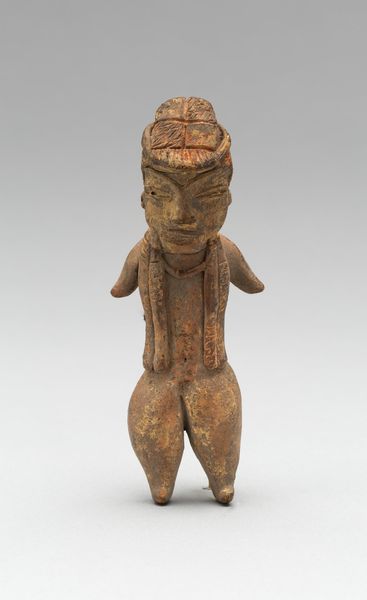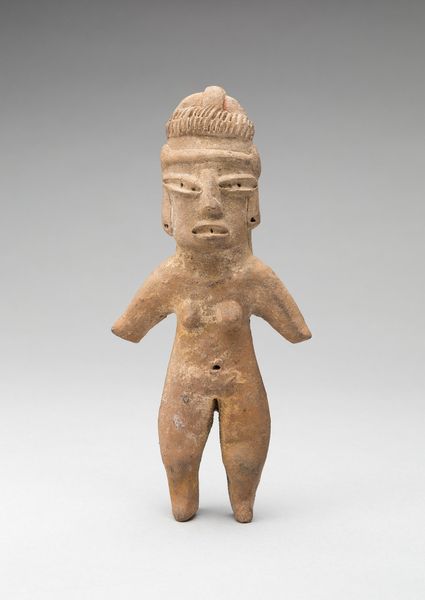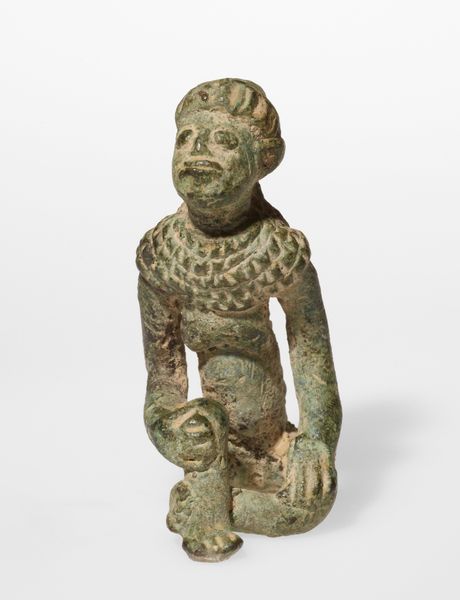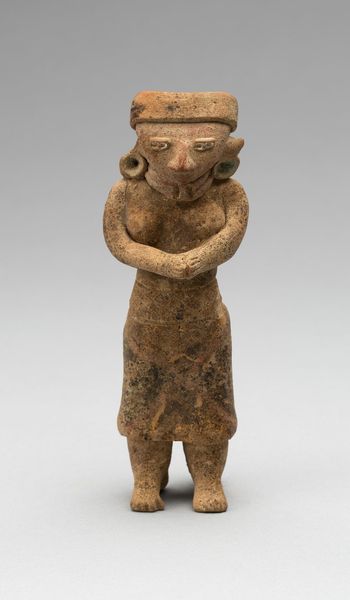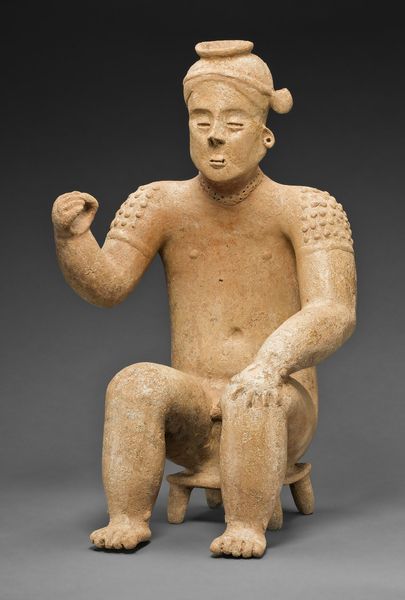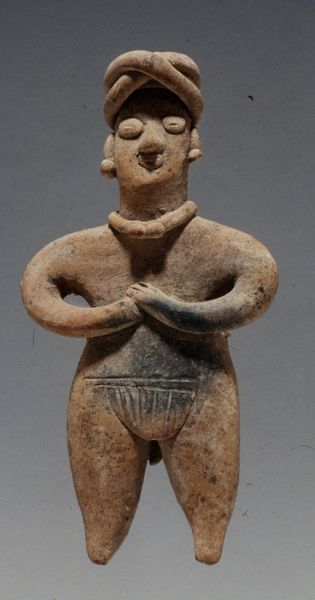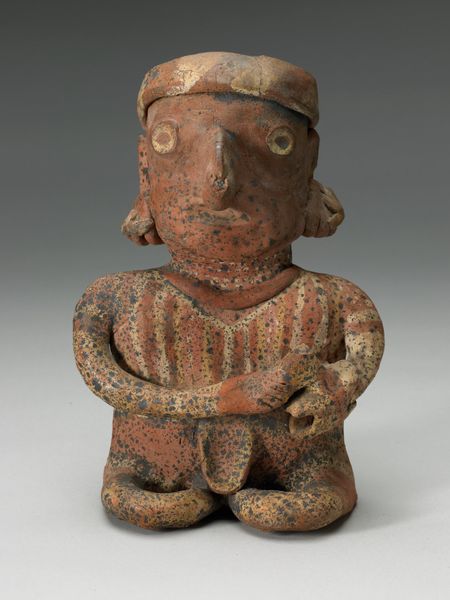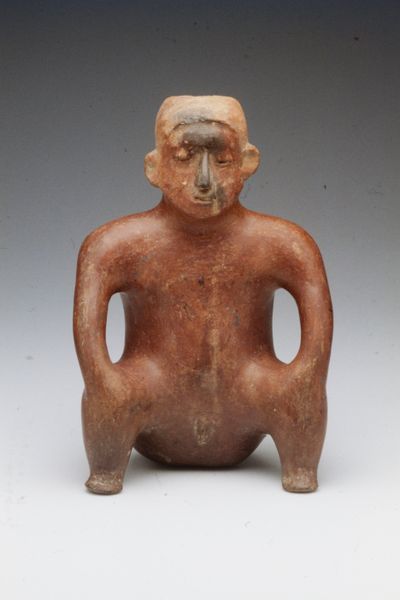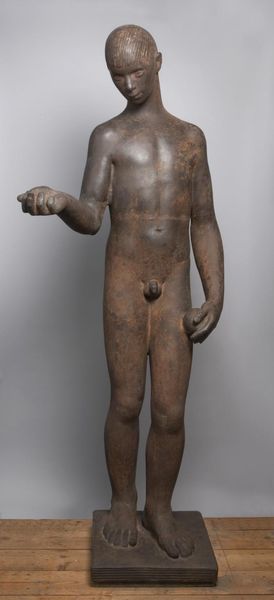
ceramic, sculpture, terracotta
ceramic
figuration
sculpture
terracotta
indigenous-americas
Dimensions: 20 1/4 × 11 1/2 × 5 1/2 in.
Copyright: Public Domain
Curator: Before us stands a ceramic sculpture titled "Standing Male Figure Holding a Ball," created by the Jalisco culture around 100-300 AD, currently residing here at the Art Institute of Chicago. What strikes you most about it? Editor: There’s a certain raw earthiness to this piece that I find compelling. The figure is simplified, almost geometric, but the material itself speaks volumes about its origins and the hands that shaped it. It feels very tactile, almost like unrefined clay. Curator: Indeed, the sculpture presents a compelling example of the ceramic tradition in ancient Jalisco. The figure’s pose and the ball it holds point towards ritual practices and ballgames of the era. Its display in a major museum reflects a dialogue between indigenous cultures and broader historical narratives. Editor: Looking at it through a materialist lens, I wonder about the process of extraction and preparation of the clay. Was it locally sourced? And what were the techniques employed to mold and fire such a piece nearly two thousand years ago? Those aspects reveal the community’s understanding and utilization of their surrounding environment. Curator: These are fascinating points. It’s crucial to consider the social function this figure might have had. Was it a votive offering, a depiction of a player, or even a ruler? The placement in elite tombs from this region of Jalisco may suggest social status or specific class uses. Editor: And let’s not forget the labor involved. How many artisans were involved in its production, and what was their role in society? Thinking about the socio-economic implications helps us appreciate the true cost of the piece. Curator: The geometric simplification could be seen as either aesthetic choice or constraints given by the technology, resources and traditions. But you are right, to engage in that dialog helps create context of social hierarchy during that era. Editor: Absolutely. It's that constant interplay between material reality and societal factors that I find so crucial in our understanding of art. The material and labor tell stories every bit as compelling as those narrated by historical accounts. Curator: Thinking about the journey of this piece - from its origins in Jalisco to a modern art institution shifts our perspectives on indigenous cultural value. I hope this dialogue encourages our audience to look for more. Editor: Precisely. I leave this interaction thinking of my role in consuming goods today. The story this simple sculpture speaks of labor, local resource use, and firing resonates as a statement of material and labor relationships then, as they are now.
Comments
No comments
Be the first to comment and join the conversation on the ultimate creative platform.

